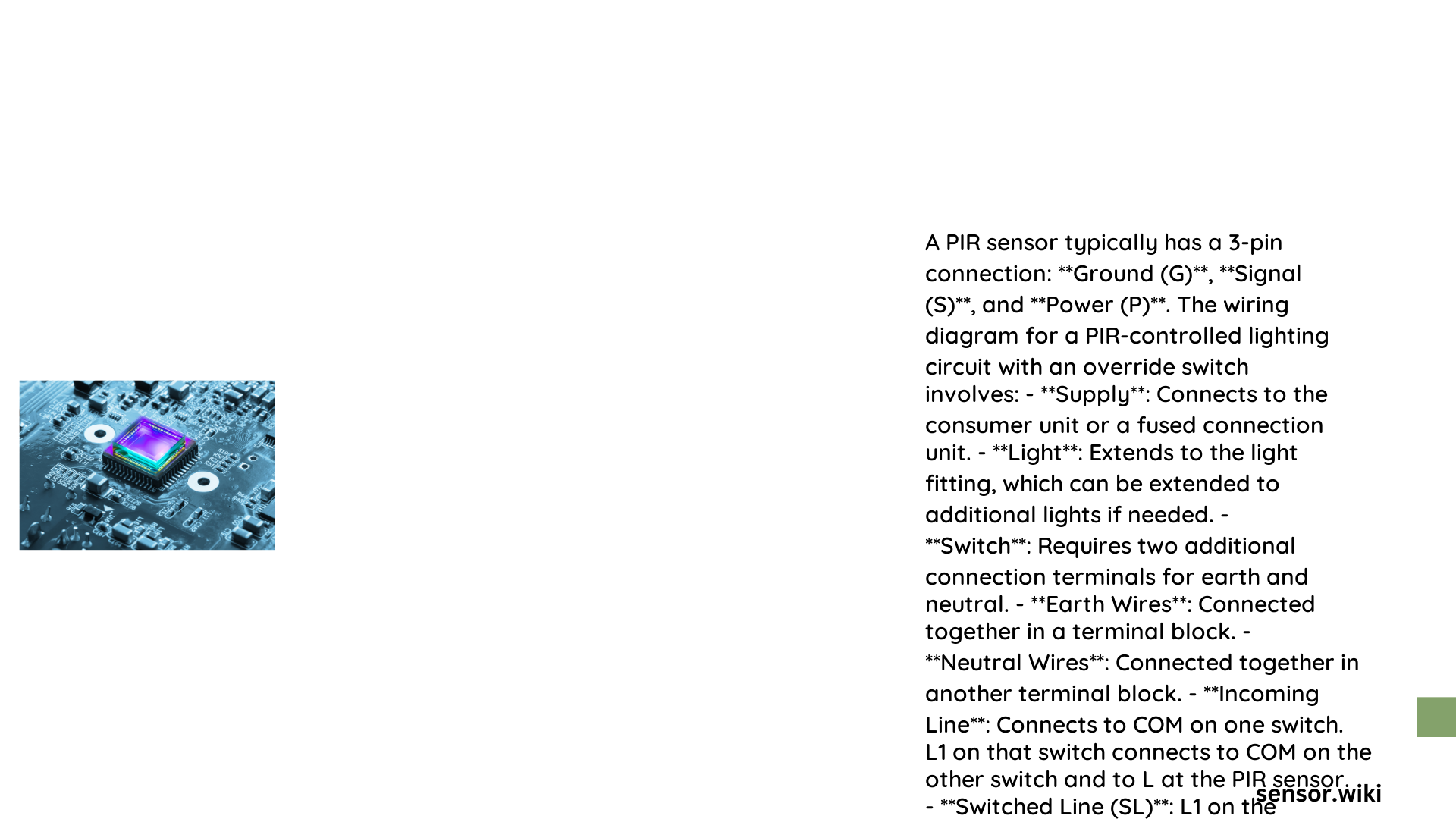Passive Infrared (PIR) sensors are critical components in motion detection systems, enabling precise tracking of movement through strategic electrical connections. Understanding the PIR sensor wire diagram is essential for successful implementation across various electronic projects, from home security systems to automated lighting controls. This comprehensive guide will explore the intricate details of PIR sensor wiring, providing engineers and hobbyists with a definitive resource for accurate circuit design and implementation.
What Are the Standard PIR Sensor Pin Configurations?
Typical PIR Sensor Pinout
| Pin | Function | Voltage Range | Typical Color |
|---|---|---|---|
| VCC | Power Input | 4.5V – 12V | Red |
| GND | Ground Connection | 0V | Black/Brown |
| OUT | Digital Signal Output | 3.3V TTL | Yellow/Green |
How Do You Connect PIR Sensor Wires?

Wiring Connection Steps
- Power Connection
- Connect red wire to positive voltage supply (5V recommended)
- Ensure stable power source
-
Use appropriate current-limiting components
-
Ground Connection
- Connect black/brown wire to circuit ground
- Verify solid electrical connection
-
Minimize ground loop interference
-
Signal Output
- Connect yellow/green wire to microcontroller digital input pin
- Use pull-up resistor if required
- Configure input pin for digital signal reading
What Precautions Should You Take During Wiring?
Critical Wiring Considerations
- Wire Gauge Selection
- Use 22-24 AWG flexible wire
- Ensure proper insulation
-
Minimize wire length to reduce noise
-
Interference Prevention
- Keep sensor wires away from high-frequency signal lines
- Use shielded cables if possible
- Maintain distance from wireless communication modules
How Can You Optimize PIR Sensor Performance?
Advanced Wiring Techniques
- Implement proper grounding strategies
- Use decoupling capacitors near power pins
- Apply external filtering for clean signal transmission
- Consider electromagnetic compatibility (EMC) guidelines
What Are Common Wiring Mistakes to Avoid?
Potential Pitfalls
- Reversing power and ground connections
- Overlooking pull-up/pull-down resistor requirements
- Neglecting proper wire strain relief
- Ignoring electromagnetic interference sources
Practical Wiring Diagram Example
+---------------------+
| Power Supply (5V) |
+---------------------+
|
| (Red Wire)
↓
+---------------------+
| PIR Sensor Module |
| - VCC |
| - GND |
| - OUT |
+---------------------+
|
| (Yellow Wire)
↓
+---------------------+
| Microcontroller |
| (Digital Input Pin) |
+---------------------+
Recommended Tools for PIR Sensor Wiring
- Multimeter
- Wire strippers
- Soldering iron
- Heat shrink tubing
- Helping hands/PCB holder
Troubleshooting Wire Connection Issues
- Verify voltage levels
- Check wire continuity
- Test signal integrity
- Validate ground connections
- Inspect for physical damage
Conclusion
Mastering the PIR sensor wire diagram requires understanding electrical principles, precise connection techniques, and systematic approach to circuit design. By following recommended practices, engineers can create robust motion detection systems with reliable performance.
Reference:
– Adafruit PIR Sensor Guide
– Arduino PIR Sensor Tutorial
– Electronics Hub PIR Sensor Connections
